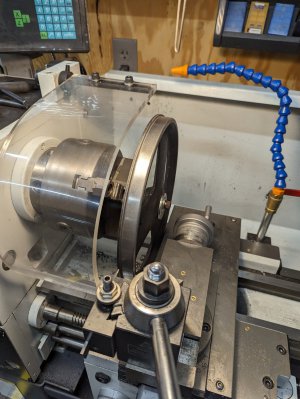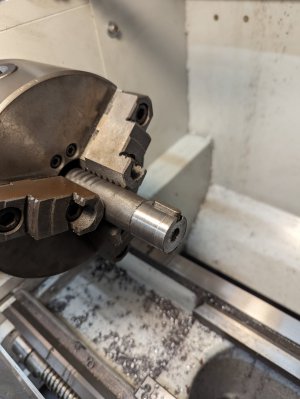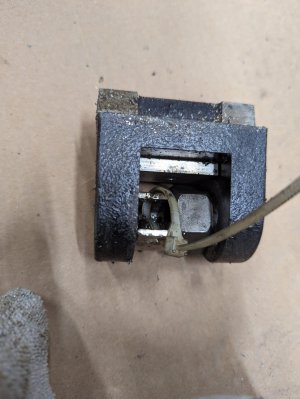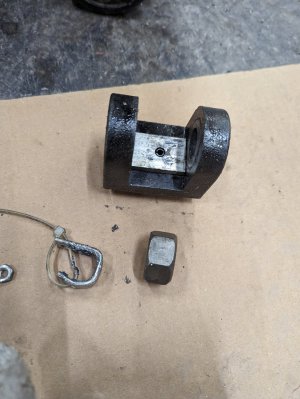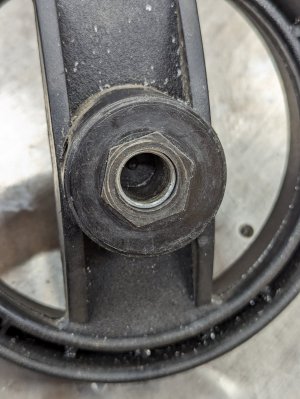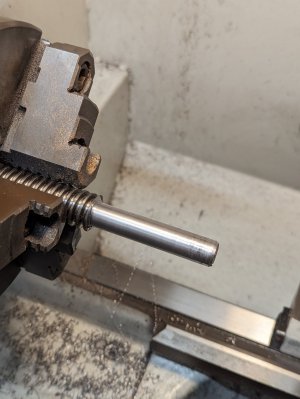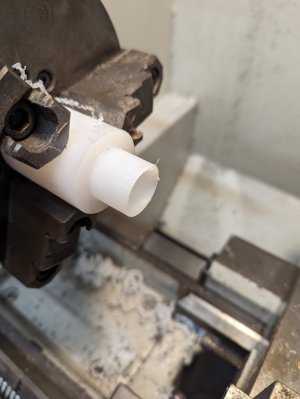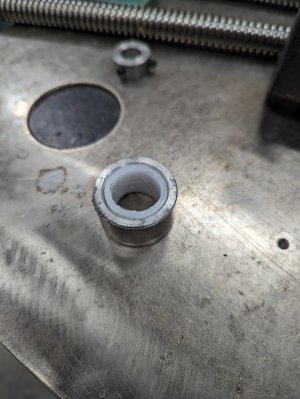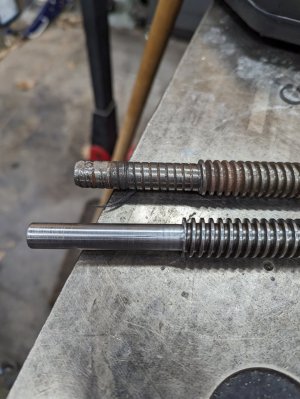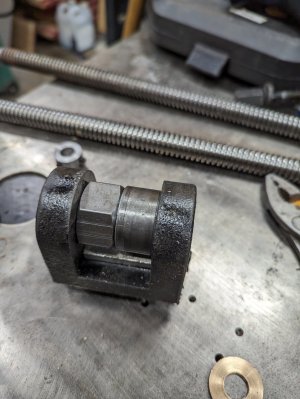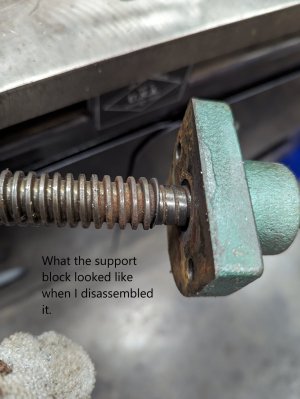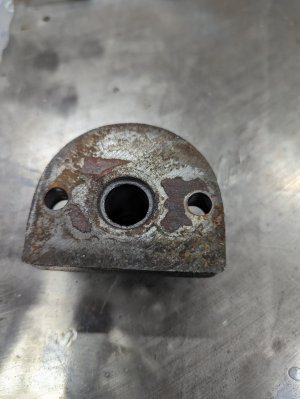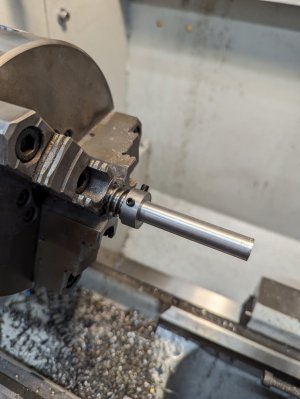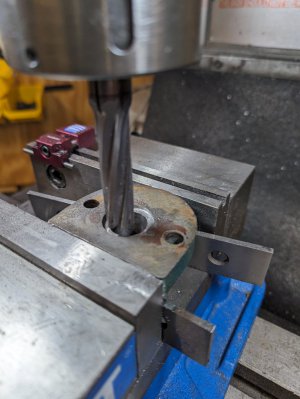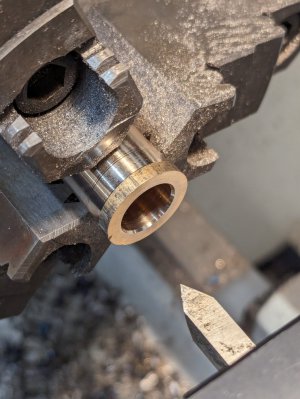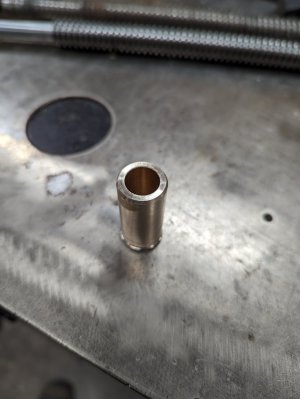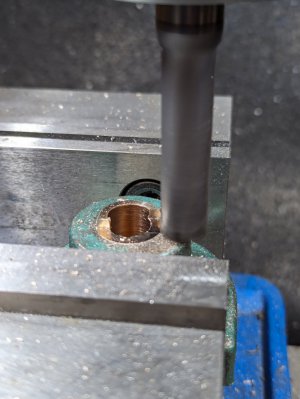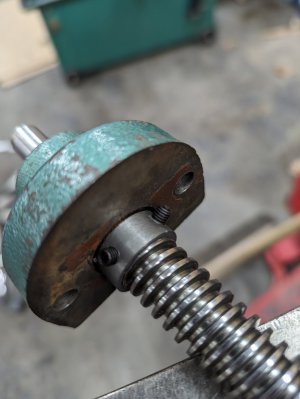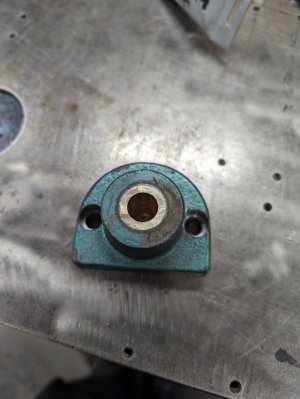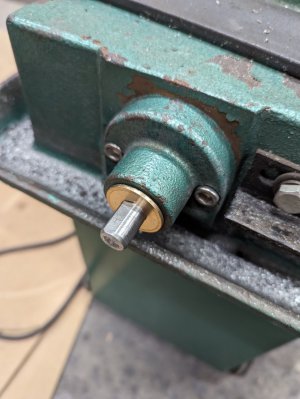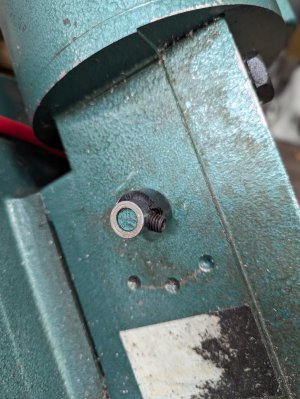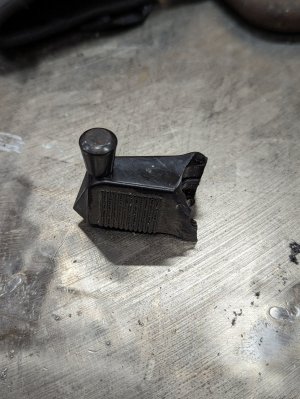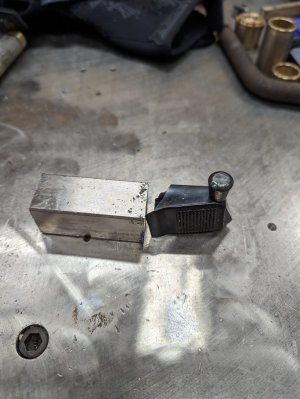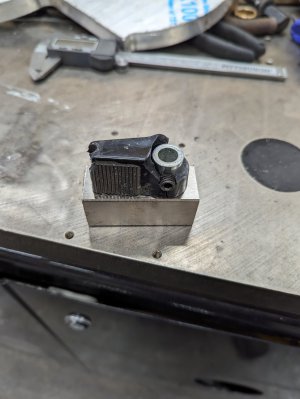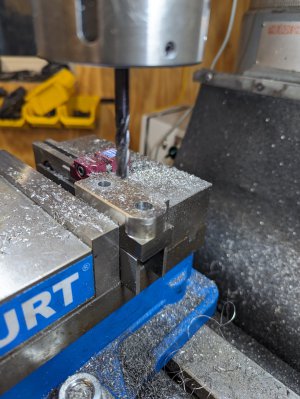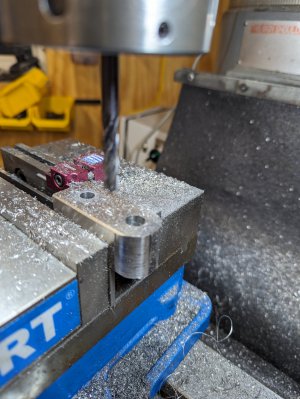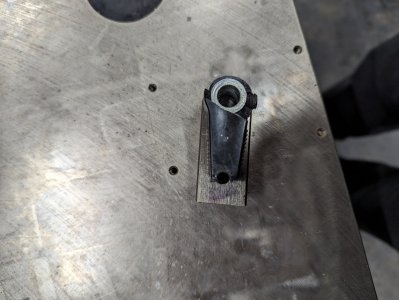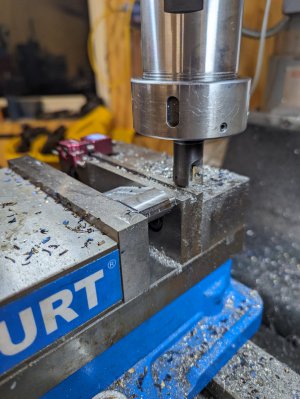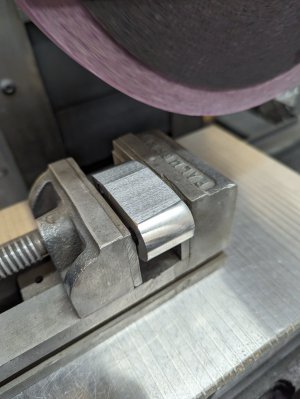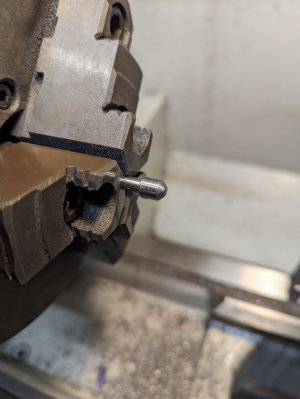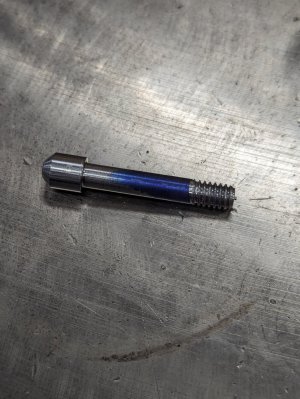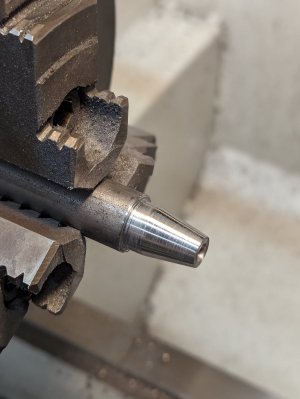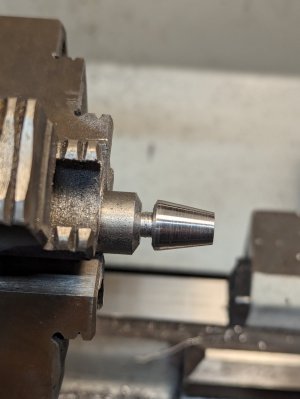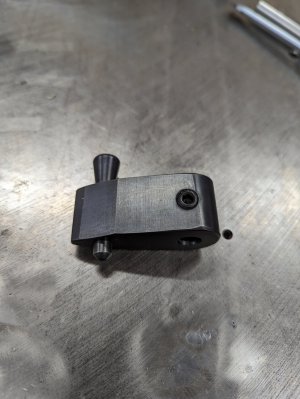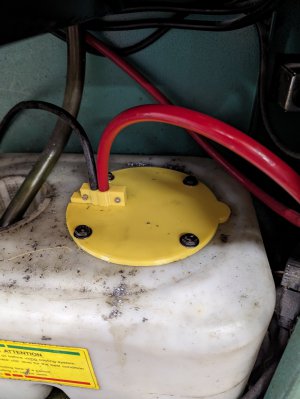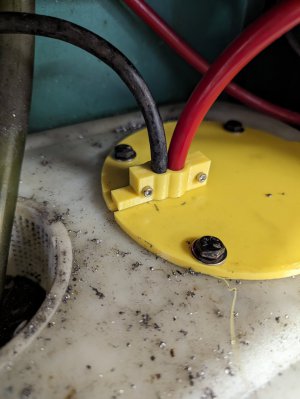- Joined
- Jan 7, 2016
- Messages
- 3,273
I purchased this Enco bandsaw on an online auction sight unseen. I figured, how bad could it be?
Once home, I grabbed my tractor to unload it from the pickup, utilizing my pallet forks. Unfortunately, it tipped over towards the tractor and pushed the cooling fan shroud into the cooling fan on the bandsaw motor. This was an omen.
Once I removed the fan shroud and confirmed that the plastic fan was all that was broken (other than my ego), I drew a new fan in Solidworks. That drawing was then sent to my 3D printer, and a few hours later, I had a new fan.
Once home, I grabbed my tractor to unload it from the pickup, utilizing my pallet forks. Unfortunately, it tipped over towards the tractor and pushed the cooling fan shroud into the cooling fan on the bandsaw motor. This was an omen.
Once I removed the fan shroud and confirmed that the plastic fan was all that was broken (other than my ego), I drew a new fan in Solidworks. That drawing was then sent to my 3D printer, and a few hours later, I had a new fan.
Attachments
-
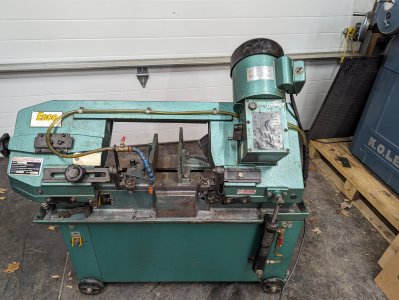 PXL_20231019_005842214.jpg591.5 KB · Views: 16
PXL_20231019_005842214.jpg591.5 KB · Views: 16 -
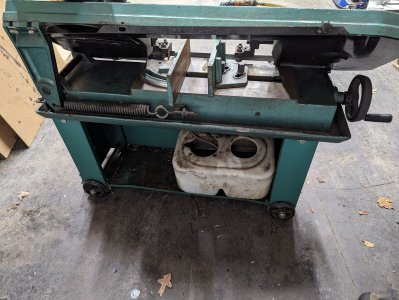 PXL_20231019_005915476.jpg619.9 KB · Views: 16
PXL_20231019_005915476.jpg619.9 KB · Views: 16 -
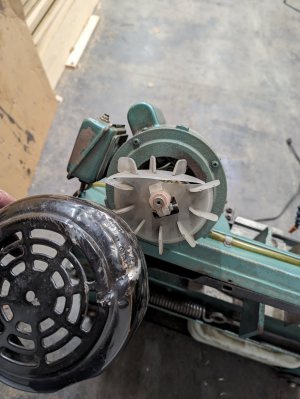 PXL_20231019_005952273.jpg220.3 KB · Views: 13
PXL_20231019_005952273.jpg220.3 KB · Views: 13 -
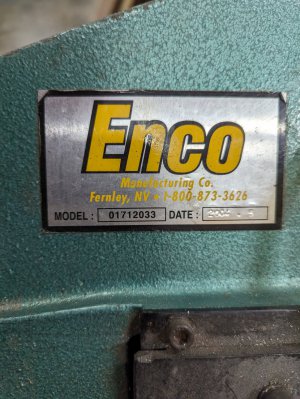 PXL_20231019_012528023.jpg384.8 KB · Views: 12
PXL_20231019_012528023.jpg384.8 KB · Views: 12 -
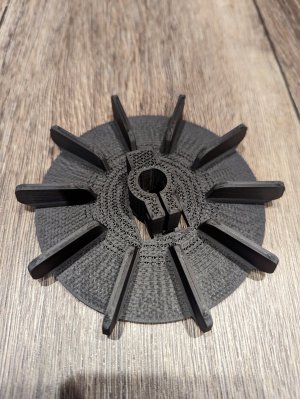 PXL_20231028_012316085.jpg361.5 KB · Views: 12
PXL_20231028_012316085.jpg361.5 KB · Views: 12 -
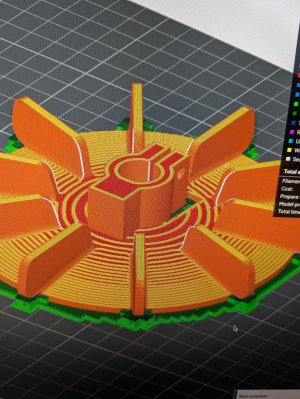 PXL_20231028_030808751.jpg456.4 KB · Views: 12
PXL_20231028_030808751.jpg456.4 KB · Views: 12 -
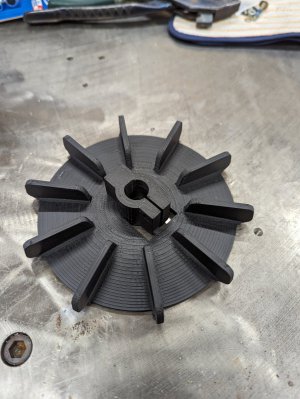 PXL_20231029_150601570.jpg291.8 KB · Views: 13
PXL_20231029_150601570.jpg291.8 KB · Views: 13 -
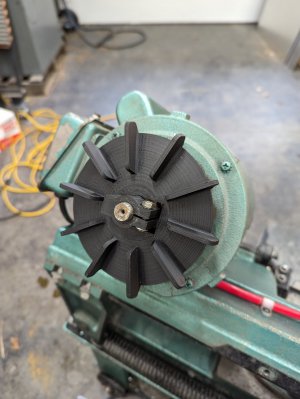 PXL_20231029_151301023.jpg202.8 KB · Views: 17
PXL_20231029_151301023.jpg202.8 KB · Views: 17


